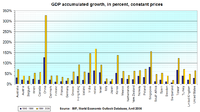
Photo from wikipedia
Skill has allowed lithic analyses to expand their scope beyond the limits set by a representational understanding of practices and sociocultural dynamics. It remains excluded from coarse archaeological contexts in… Click to show full abstract
Skill has allowed lithic analyses to expand their scope beyond the limits set by a representational understanding of practices and sociocultural dynamics. It remains excluded from coarse archaeological contexts in favour of higher resolution ones however. Such coarse contexts are ubiquitous and must be included to broaden description, interpretation and theorization into broader and more heterogeneous narrative landscapes. This paper argues that skill is key to including lithic practices from coarser archaeological palimpsests, provided it is reframed as a process immanent to any cultural practice that conjoins with other processes to shape contexts of various scales. Second, skill must be anchored with a set of core concepts—technical difficulty, accidents and execution quality—that each knapping event and every lithic assemblage actualizes, regardless of scale. Third, methodologies must be built using this set of core concepts and adapted to a site’s specifics. Using such a methodology, I describe learning patterns, skilled reduction sequences and spatial patterning in the plowed fields of La Martre (Quebec, Canada), where millennia of continuous occupation and hundreds of thousands of lithic remains have been mixed up in a dense and homogeneous layer. I show that understanding skill as a trans-scalar process can help free lithic analyses from prior, bounded and familiar units of analysis. It can and should be used first to draw broader patterns that connect contextually specific lithic expressions. It affords for scalable analyses that can help expand the scope of the depositional contexts archaeologists routinely work with.
Journal Title: Journal of Archaeological Method and Theory
Year Published: 2021
Link to full text (if available)
Share on Social Media: Sign Up to like & get
recommendations!